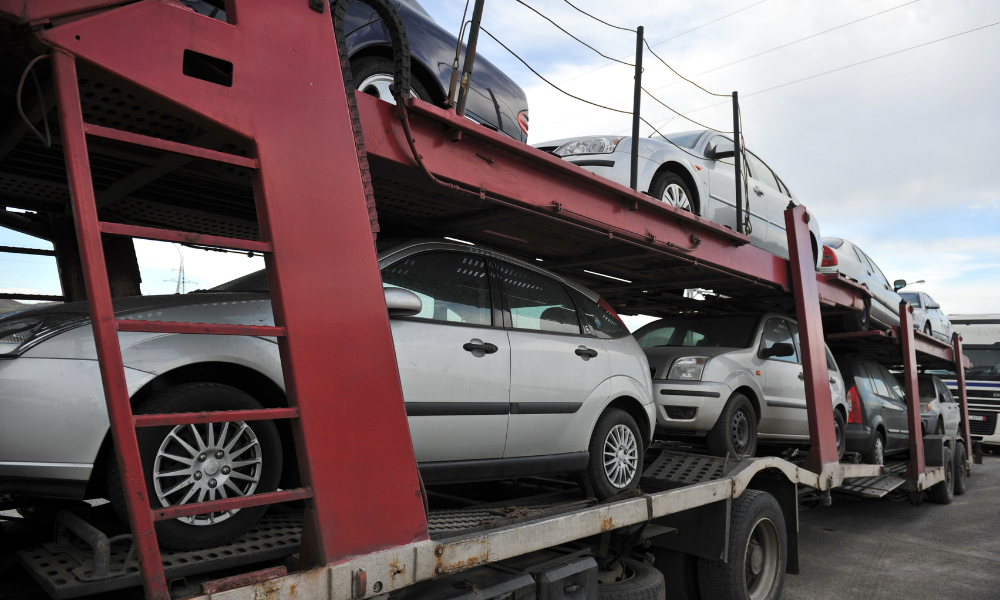Jonathan Haidt’s renowned book “The Anxious Generation” has been highly influential explaining the teen mental health epidemic in America, Canada, and many international nations. Although the crux of the book (and the cause of its notoriety) describes what he calls “the great rewiring” of childhood with the proliferation of the iPhone and exploration of the virtual world, Haidt begins by examining the decline of the play-based childhood which began to wane in the 1980s and 1990s which was an equal contributor to the mental health epidemic.
Haidt explains that a play-based childhood is one where children play freely in an unstructured environment and outdoors. It is unsupervised free play where children learn the necessary skills for adulthood. However, in the 1980s and increasingly in the 1990s, children’s access to unsupervised outdoor free play was reduced out of fears originating from the media about children’s safety. Haidt argues that the loss of free play over time and the rise of continual adult supervision deprived children of what they needed most to overcome the normal fears and anxieties of childhood: the chance to explore, test and expand their limits, build close friendships through shared adventure, and learn how to judge risks for themselves.
Haidt advocates for a return of childhood independence, responsibility, and empowerment in the real world (as opposed to the virtual world). In particular, allowing children to roam free unsupervised in their local communities as their parents and grandparents had been allowed to at relatively young ages — a “free range childhood.” This is a departure from the status quo where children are rarely left unsupervised out of fear of kidnapping or other safety concerns.
What is the appropriate age, for example, to walk to school alone, to ride a bicycle to a friend’s home, or walk to a local store?
The answer from a parenting perspective may depend on one’s own personal experience, their particular geographic location and population, their assessment of the child’s abilities, or whether the family has realistic and viable supervision alternatives.
What about from a legal perspective? Is it legal to allow children outside unsupervised? Who bears responsibility if there is an accident? Although there may be an obvious at-fault party liable for an accident, there may be an apportionment of liability attributable to the child or the child’s parents. The focus of this article is whether Haidt’s “free range childhood” or play-based childhood is legal in terms of whether the courts hold the parents responsible if, or when, a child encounters negligence and how that responsibility has changed over time.
Before turning to the parents, it is worthwhile to examine how the courts assess the liability of the child to see if the child is held responsible if, or when they encounter negligence.
Contributory negligence of a minor
Contributory negligence is the legal doctrine that refers to the failure to demonstrate care for one’s safety which contributed to the loss. Some examples can include not wearing a seatbelt in a car or helmet on a bike, failing to look both ways before crossing the road, or not crossing at a pedestrian crosswalk.
Even if a party is contributorily negligent, it does not necessarily alleviate the at-fault party of liability. However, the quantum of the damages may be reduced to reflect a portion of contributory negligence.
In examining the contributory negligence of a child, the legal test is whether a child exercised the care expected from children of like age, intelligence and experience… This is both an objective and subjective standard, which acknowledges the need for individualized treatment along with the need for consistency in the law.
The test for a minor’s contributory negligence relies on an analysis of what the individual child knew or expected. In other words, a 3-year-old child and a 12-year-old child would not be held to the same standard and perhaps neither would two different 10-year-olds if they were raised in rural versus urban settings. How familiar was the child with the roadway and traffic conditions? Did the child look both ways and should they have known to do so?
The colloquially coined “child darting cases” encompass situations where a child enters the roadway leaving a motorist to react. Experts typically focus on whether the motorist had time to react and whether they can escape liability. There is also an analysis of the contributory negligence of the child and often a question of whether there is liability attributable to the parents for the failure to supervise (discussed below).
These cases are driven by the facts and there are cases both for and against apportioning significant contributory negligence on the part of a child. Haidt’s theory, society’s increasing supervision of children over time with the decline of the play-based childhood, might suggest that leniency towards children (and parents) from the courts has progressively decreased and liability against minors (or parents) increased to reflect the parenting practices over time. A fulsome analysis of the trend remains to be seen and is beyond the scope of this article.
In 1966 in Gough v. Thorne a 13-and-a-half-year-old girl was found not contributorily negligent for injuries she suffered after being struck by a motor vehicle as a result of crossing a road after being beckoned by an adult on the other side of the road. Lord Denning stated:
“A judge should only find a child guilty of contributory negligence if he or she is of such an age as to be expected to take precautions for his or her own safety; and then he or she is only to be found guilty if blame should be attached to him or her. A child has not the road sense nor the experience of his or her elders. He or she is not to he found guilty unless he or she is blameworthy.”
By 2003, in Lloyd (Litigation Guardian of) v. Rutter, Justice Robertson found an 11-year-old pedestrian 70% contributorily negligent for walking across the road in an “unsafe manner.” The minor had looked both ways but failed to see the approaching vehicle, despite an unobstructed view. He was not at a designated crosswalk but in a residential area, in a school zone. The at-fault driver was inexperienced, unlicensed, saw the minor plaintiff looking to cross but continued regardless assuming the plaintiff would wait. The driver was only responsible for 30% of the plaintiff’s damages.
A more recent example apportioning significant contributory negligence against a minor is Serravalle v. Duggan, a motion for court approval for a tort settlement pursuant to R. 7.08 heard in 2023. The court discusses contributory negligence of an 11-year-old girl who attempted to cross back across the road after collecting her family’s mail from the mailbox. Her mother was waiting for her while she had crossed the two-lane road in her rural residential neighbourhood.
The minor plaintiff was struck by a vehicle as she ran back home across the road. To her right was a garbage truck stopped and blocking the lane. As she entered the far lane, she was struck by a vehicle attempting to overtake the garbage truck that crossed the yellow line and entered the lane for oncoming traffic. As this driver’s view was obstructed by the truck, he struck the plaintiff. In the discussion of whether the minor plaintiff was contributory negligent the court acknowledged that several witnesses saw her run before looking both ways. Accordingly, the court agreed that a reasonable range of contributory negligence was 50%-70%.
Applying Lord Denning’s rationale to Serravalle; was the failure of the minor to look both ways “blameworthy”? Especially if the minor may not have seen the approaching vehicle coming around from the opposite lane since the minor’s visibility was blocked as well?
Children may absorb a large share of the liability in many of these cases based on their own actions. What is more pertinent to Haidt’s parenting theory, however, is parental liability in circumstances of negligence and the shift of the standard of care to continual parental supervision.
Parental liability
“A parent is required to supervise their child and a parent may be liable in negligence for their child’s injuries if the parent’s behaviour falls below the accepted standard of care by parents generally in the community.”
Haidt describes the parental standards in our communities significantly changing over the last 30-40 years. This is especially the case in terms of child supervision outside of the home and is reflected by the court’s view of the acceptable standard of care.
Can parents in 2024 allow their children out of the house without supervising them? In 1978 the Supreme Court of Canada in Arnold v. Teno held that a mother who gave her four-year-old child and her six-year-old brother money to buy a treat from an ice cream truck across the street from their house was not liable for the injuries suffered by the four year old after she was struck by an automobile that passed the ice cream truck as she was crossing the road back home; quite similar to the vehicular mechanics of Serravalle. The court’s description in Arnold of the parental responsibility for the mother in particular is noteworthy to reflect the standard at the time:
“Here was a mother of four young children who was speaking to her husband on the telephone and was interrupted by the two youngest crying for money to buy ice cream confections to be supplied by the defendant…from a vehicle designed to attract if not entice young children…The children had both received very strong instructions as to how they should behave in reference to crossing the street and, in fact, had crossed the street for that very purpose on other occasions.
The standard of care put on the mother is, I think, properly the standard of care of mothers in the immediate community of the approach of this ice cream truck which was designed to attract and actively operate so that even children of tender years were enticed to purchase their wares. Yvonne Teno and the other mothers were entitled to rely on the vendor of the ice cream from such a vehicle to exercise some care toward the children which it attracted. I, therefore, am of the opinion that the appeal of Yvonne Teno should be allowed and that no contribution should be assessed against her.” [Emphasis added]
Along a similar line, in Bartosek (Litigation Guardian of) v. Turret Realties Inc [2001] OJ No 4735, a six-year-old plaintiff, who had a developmental delay, rode his bike down a ramp into the pathway of the defendant’s vehicle. The evidence was that the driver of the defendant vehicle, was proceeding normally through a green light. Justice Kent held that the defendant had no realistic opportunity to avoid the collision with the minor plaintiff.
Despite his young age, Justice Kent held that the young plaintiff was 50% responsible for his injuries.
In terms of parental supervision and liability, the father could from his apartment residence, watch and supervise his son on the defendant’s premises. The court ruled that a “parent cannot be held to a standard of 100 per cent supervision and immediate proximate control of a six-and one-half year old boy. Even if Andrew Bartosek had been physically closer and actually watching when Kirk was about to start his ride down the ramp, it is unlikely that what occurred could have been prevented by him.”
This approach is contrasted over 20 years later with the court’s comment in Serravalle that the plaintiff’s mother could have moved closer to the road while watching her daughter cross the road. By 2023 the court appears to impute an additional physical proximity requirement to parental supervision which differs from Bartosek.
One of the main indicators of parental liability is whether the parents properly instructed their child on safety precautions. In Bartosek, the court discussed that, “at minimum he had cautioned Kirk [the son] to be careful on the ramp. It is clear that he spent significant time with Kirk teaching him how to ride and providing instruction on safety issues.”
Echoing this approach, in 2013 in British Columbia, in Taggart (Litigation Guardian of) v. Heuchert a third-party claim was dismissed against the parent of a 10-year-old child who was struck by a car while walking across an unmarked crosswalk commonly used by adults and children in the community. The court stated that:
An error of judgment standing alone does not prove negligence if the parent’s actions are those a reasonably careful parent might have taken, viewed by the standard of care generally accepted in the community. The standard of care is not one of perfection. It does not require a parent to take every possible step to ensure the safety of the child. It includes both an objective and subjective aspect.
The objective aspect requires a determination of the community standard at the time generally expected of a reasonably prudent parent. The subjective aspect places the reasonably prudent parent in circumstances identical to those Ms. Taggart faced at time, and knowing only what she believed and understood.”
In Teno, the court reasoned that while children were in the vicinity of the ice cream truck, the vendor was more responsible for child’s safety than the parents. This was not necessarily the case and view of the Defendants in Lever et. Al. v. Katerberg, a summary judgment motion heard in Ontario in 2018. Lever involved a five-year-old girl who was horrifically injured in a lawnmower accident while playing in her neighbour’s yard in 2004.
In Lever, the parties were families whose children played together in neighbouring yards unsupervised, much like the approach Haidt describes. However, the defendant rode his lawnmower while the children were playing in his yard and reversed over the minor plaintiff. The court dismissed the counterclaim against the child’s father:
“There is no evidence that the accepted standard of care by parents in the immediate community required a parent be present at every moment to supervise their children. Bronwen’s father could not possibly have a duty to directly supervise Bronwen when he was at work and when out running errands.”
However, in terms of the counterclaim against the child’s mother, the court ruled that there was a genuine issue requiring a trial as she knew her daughter was playing in the yard where the lawnmower was present and went inside to make dinner. For the mother, the court ruled that a trial must determine the acceptable standard of care of a reasonably prudent parent in the immediate community to which there was conflicting evidence.
Although many cases focus on the instruction provided to the child in determining parental responsibility, there is also an analysis of whether it was appropriate for the child to be unsupervised. Can the court impose liability on parents who let children out of their sight while playing at a friend’s home?
The Supreme Court of Canada in Teno allowed the plaintiff’s mother to finish her telephone conversation with the child’s father and ascribed the duty to look out for the child’s safety to the vendor of the ice cream truck.
Appreciating that there is some latitude to individual community standards, these families regularly allowed their six-year-olds to play at each other’s homes without their own parent’s supervision, or what is known as a “drop off playdate.” The policy implications of ascribing liability to a parent who drops their child at a friend’s house is certainly far reaching.
Perhaps the most striking finding from Lever was that it appears that the father was afforded latitude for allowing his child to play without his supervision while he could “go to work or run errands,” yet the mother’s liability remained an issue as she only had to go inside to make dinner.
Does a parent who works in the home have a higher duty than a parent who works out of the home? Does a parent have a duty to continually monitor a child every moment?
It appears that Haidt is correct. In evaluating the objective-subjective test, the court considers parenting standards in the community. Based on these decisions, the community’s standard of care regarding the extent of parental supervision of their children has risen over time. It remains to be seen whether a return to the play-based childhood will occur and how the courts will react in their expectations.
Until then, perhaps the mother in Lever should have simply ordered dinner using her iPhone while keeping her eyes glued to her child while staying close by in the neighbour’s backyard.
***
Lawyer: Sonia B. Leith, partner, Neinstein LLP
Lawyer bio:
 Sonia is a Partner at Neinstein Personal Injury Lawyers LLP. Her practice primarily focuses on motor vehicle accidents, accident benefit claims, long-term disability disputes, and occupier's liability cases. Sonia is known as a passionate and skilled litigator.
Sonia is a Partner at Neinstein Personal Injury Lawyers LLP. Her practice primarily focuses on motor vehicle accidents, accident benefit claims, long-term disability disputes, and occupier's liability cases. Sonia is known as a passionate and skilled litigator.
Clients consistently praise Sonia's compassion, attention to detail, and effectiveness as she vigorously fights on their behalf. She has extensive experience representing her clients in the courtroom and across administrative tribunals.
Sonia graduated from the University of Western Ontario Law School in 2008. At Western she competed in the prestigious Arnup Cup, the Corporate/Securities Law Moot, and received the London Life Insurance Company award in 2007. Sonia received an Honors degree in Political Science from Western in 2005 and graduated as the Gold Medalist. She was recognized as a Leading Lawyer to Watch in 2023 by the Lexpert Directory®.
Sonia is frequently asked to speak at seminars and conferences, and served as co-Chair of the Women's Law Summit. She has lectured at Western Law on civil litigation and insurance law.





